Vegetables suffer from a bad reputation. “Ugh,” you might think. “They taste terrible and they’re too hard to cook.”
It’s no surprise that despite the health benefits of veggies, few people eat enough of them.
Most adults should eat at least two to three cups of vegetables daily. But barely one in 10 adults actually meets this guideline.
Why are vegetables important?
They’re low in calories, packed with nutrients and may help reduce your risk of certain chronic diseases, including heart disease. Vegetables high in potassium – sweet potatoes, spinach, etc. – can help keep your blood pressure at healthy levels.
Vegetables are also full of fiber, which can help reduce blood cholesterol levels. They also fill you up so that you’re less hungry for unhealthy stuff.
Here are nine tasty and easy ways to slip more vegetables into your day:
- Soups and Stews
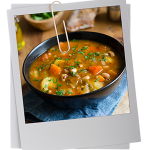
Fall and winter are the perfect time for comfort food. Be creative and clean out your produce drawer. You can add a variety of vegetables, including carrots, cabbage, spinach, and celery, to your soups and stews. Other good additions are onions, winter squash, potatoes, and tomatoes. - Roasted Vegetables
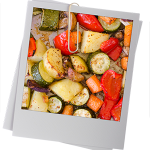
Oven roast vegetables at high temperatures with a small amount of olive oil and garlic for sure-fire palate pleasers. For extra flavor, sprinkle them with fresh herbs or a generous splash of balsamic vinegar. Add a can of chickpeas and grated cheese and serve over brown rice or vegetable penne to round out the meal. If you’re looking for a tasty side dish, consider this whole roasted cauliflower with pomegranate and pine nuts recipe. I recently made this dish, and it tasted as good as it looks! I had leftovers the next day for breakfast because I was too excited to wait until dinner to eat this delicious dish. - Stir Fry
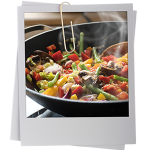
Get out your wok and stir fry a medley of red peppers, green beans, eggplant or cauliflower, broccoli, carrot and mushrooms in a small amount of olive oil. Serve as a side dish, use them to top a baked potato or make the medley a meal by adding it to rice and stir-fried beef, chicken or pork. Watch this video for quick stir-frying tips. - Salad
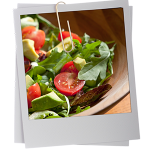
The deeper the color and the more variety of vegetables you add to a base of spring greens or lettuce, the healthier and more eye-appealing your salad will be. Here are a few suggestions for vegetables to add to your salad: carrots, red onions, mushrooms, cucumbers, beets, avocados, tomatoes, red cabbage, zucchini and red, green or yellow peppers. - Pizza

Instead of topping your pizza with pepperoni, experiment with different vegetables, including asparagus, beets, zucchini, eggplant, artichokes or Brussels sprouts. Make your pizza even healthier by using a whole grain crust and grated low-fat mozzarella cheese. Try this kid-friendly veggie pizza. - Beverages
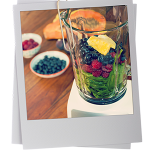
Drink your greens. Add spinach or kale to a fruit and yogurt-based smoothie. Whether you make your own smoothie (it takes less time than toasting a bagel) or buy it ready-made, you won’t taste the added vegetables, but you’ll be getting an extra serving of produce without even trying. Freeze the leftover mixture in a freezer pop mold for a refreshing snack.Check out this recipe. Combine the following in a blender and enjoy: 1 tablespoon of almond butter, ½ cup of fresh spinach, 1 cup of unsweetened almond milk, ½ a frozen banana and ½ teaspoon of cinnamon. One serving is about 190 calories. - Snacks
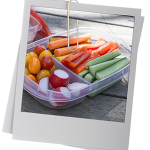
Keep a supply of washed, cut-up raw vegetables in the front of your refrigerator. When you’re looking for something quick to eat, you can grab and go. For added flavor, dip them in a hummus or a yogurt mix. Check out the calorie count on this snack: 1 cup carrots (45 calories), broccoli (30 calories), or bell peppers (30 calories) with 2 tablespoons of hummus (46 calories). - Breakfast

Add fresh or cooked vegetables to an omelet or scrambled eggs or make a breakfast burrito by wrapping scrambled eggs, peppers, onions, tomatoes and reduced-fat cheese in a flour tortilla. For a tasty treat, try this veggie quiche; reheat leftovers for a quick lunch or dinner. - Seasonal Produce
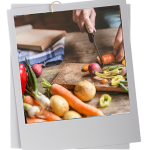
Always check to see which fruits and vegetables are in season in the fall, winter, spring and summer. When you eat fruits and veggies that are in season, you’re eating foods that are at their peak for flavor and freshness.
- Healthy Snacking Tips from a Football Party Veteran - February 2, 2022
- Why I Will Be in Line for A Flu Shot This Year - February 21, 2021
- Small Steps to Prevent Big Falls: Protecting Older Adults from Injury - February 20, 2021


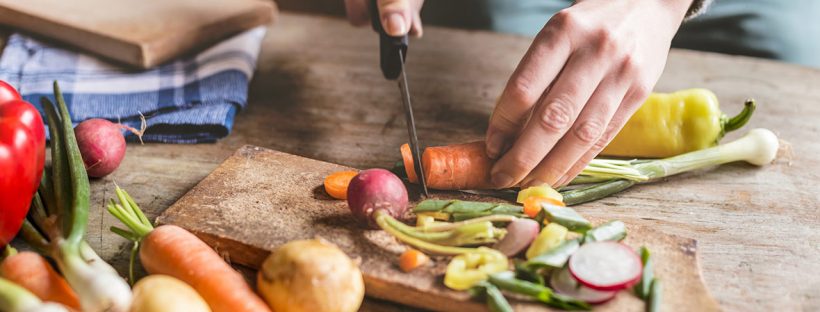
Just eat fruits and vegetables some beans and seeds and you will live a healthier longer life.